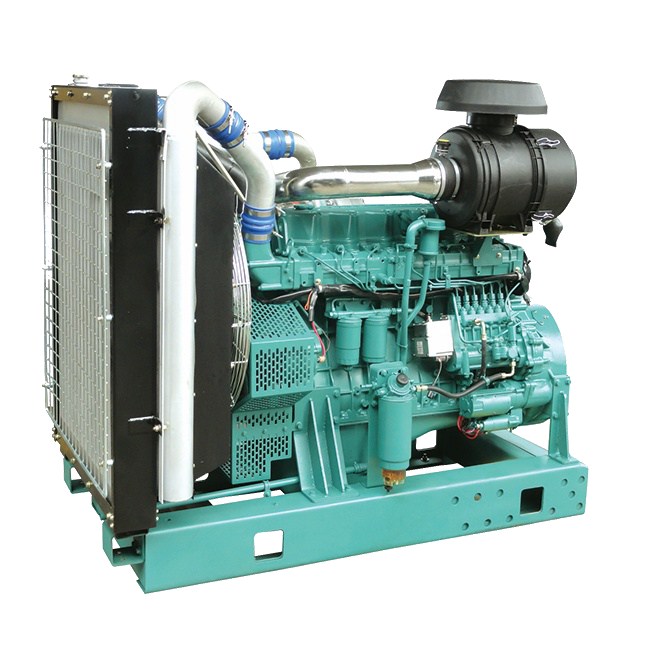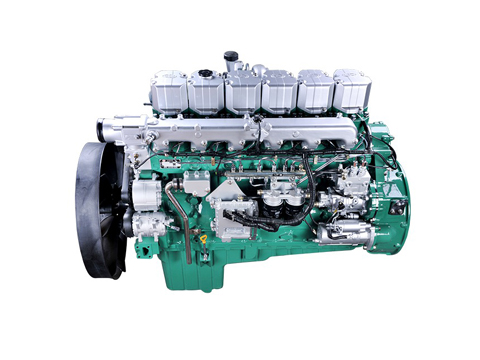
Nowadays, with the increasing demand for electricity from all walks of life, in the environment that the power grid cannot always maintain a stable and continuous power supply, the configuration of backup power equipment has become the ideal equipment for industries seeking permanent, stable and reliable power security, and diesel generators are chosen by many companies for their ruggedness, stability, strong performance and economy, becoming their main source of electricity. So, what is a diesel generator? What are the advantages and characteristics of diesel generators? Today, let's talk to you all about diesel generators.
First, let's start by understanding what a diesel generator is. A diesel generator is an internal combustion engine similar to the one under the hood of a car. It converts the energy stored in the fuel into mechanical energy by making the piston rotate, and next, that mechanical energy is converted into electrical energy through the generator, which is why your generator needs to be connected to a wire in order to power your business equipment.
So, what makes diesel different from other fuels like gasoline?
In a gasoline engine, the fuel (gasoline) is mixed with air compressed by a piston and a spark plug ignites this mixture, and the ignition is what generates the energy.
Diesel engines, on the other hand, are different from gasoline engines for two main reasons. First, the air is compressed separately - a process that requires no fuel, which allows for higher levels of air compression, resulting in higher fuel efficiency and lower fuel costs.
Second, more compressed air equals hotter air. In fact, it produces hotter air, and when diesel fuel is added, ignition is automatically generated. This means no separate spark plugs are needed and reduces maintenance requirements and frequency, saving a lot of money on maintenance that may be needed later.
Today, diesel engines are more powerful and more efficient. They are widely used in many machines and equipment or vehicles, for example, diesel engines are commonly used in trains, trucks, ships, buses and some automobiles. Nowadays, diesel generators are the most common products in the market for backup power or common power equipment.
Second, diesel generators are more reliable
Nowadays, many companies tend to deploy diesel generators because they are more reliable. In fact, since Rudolf Diesel invented the diesel engine in 1878, because the diesel engine is extremely efficient, and diesel engines than gasoline, natural gas engines use the same volume of fuel, but can produce higher efficiency and power. To this day, diesel generators are still considered the most efficient and cost-effective option. Diesel generators are designed to provide large amounts of power for longer periods of time without frequent shutdowns.
Excellent fuel efficiency is the main advantage of diesel generators. Due to their excellent design and the efficiency allowed by compressed air, they can run longer and provide more power than other types of generators such as gasoline and natural gas of the same power.
Many industrial plants, hospitals, construction sites, real estate, high-rise buildings, schools, large shopping malls, stations and other industries rely on diesel generators to keep their basic operations going whenever the utility grid fails. The same desire for reliability, economy, and stability is the reason why more businesses choose diesel over any other fuel for their backup power.
At the same time, diesel fuels are reliably available. They can be purchased anywhere, and, of course, gasoline can be found at any gas station. However, diesel fuel is safer and more reliable than gasoline, and is also better for storage and lasts longer.
And, diesel generators are more affordable
Cost is a major consideration for many businesses when purchasing a generator. In the current market, natural gas generators and diesel generators are the two cheapest options, and while the upfront cost of a diesel generator may be higher than a natural gas generator, that doesn't mean it will cost more in the long run.
This is why many businesses prefer to deploy diesel generators over natural gas or gasoline generators, due to the efficiency of diesel, its high energy density, and its reliability, making diesel generators a superior choice. Simply put, the more fuel a diesel generator provides, the more power it provides. Diesel generators also tend to reach peak efficiency before other generators.
All of this means that diesel generators run longer. The longer they run, the less you have to spend on fueling your generator.
These savings may seem insignificant, but electricity experts calculate that diesel engines cost 30-50% less to fuel than gas engines. As fuel prices rise, the savings from diesel generators in the long run may outweigh the cost of the higher configuration to begin with.
Not only that, but diesel generators are easier to maintain
Its fuel efficiency isn't the only thing that makes diesel generators cheaper, like how diesel fuel doesn't require spark plugs to ignite like gasoline engines, and its fewer parts replacements means less money spent on maintenance throughout the generator's life.
And, diesel generators won't keep you busy with tune-ups and repairs. Aside from the need for occasional oil changes and preventive maintenance checks, they are the closest thing to a "one-and-done" solution for your backup power needs.
In contrast, gas or gasoline generators burn hotter than diesel generators. This heat means more wear and tear, more maintenance and ultimately a shorter service life. In addition to oil changes, a gas or gasoline generator requires regular replacement of air filter elements, spark plugs, ignition points, rotors, distributor caps and plug wires, and it may also require carburetor adjustments and overhauls, as well as general tune-ups.
It follows that a diesel generator is more robust and reliable, it requires fewer parts to be replaced, requires much less maintenance, and can run reliably for longer periods of time.


